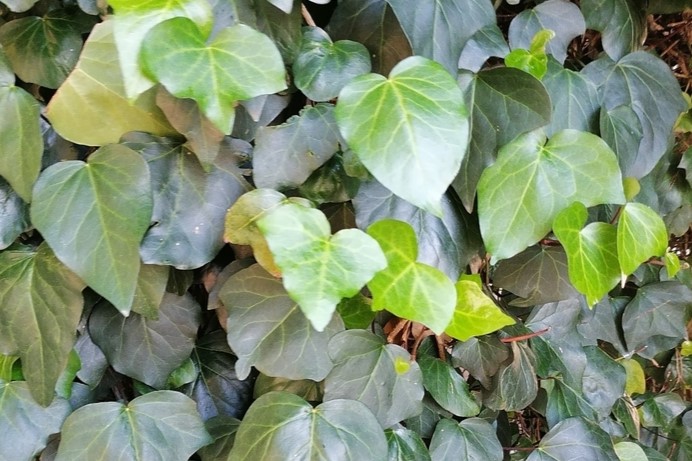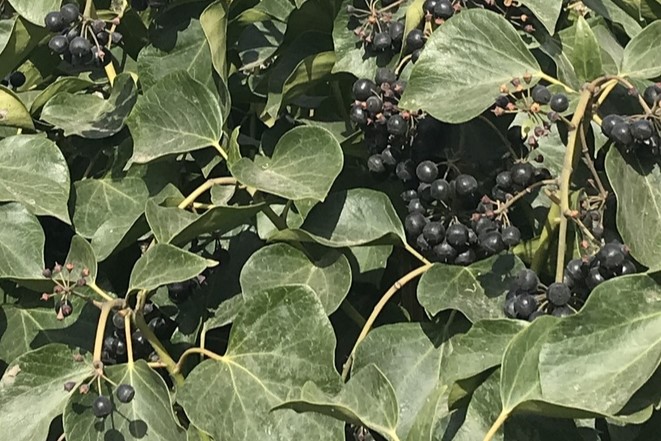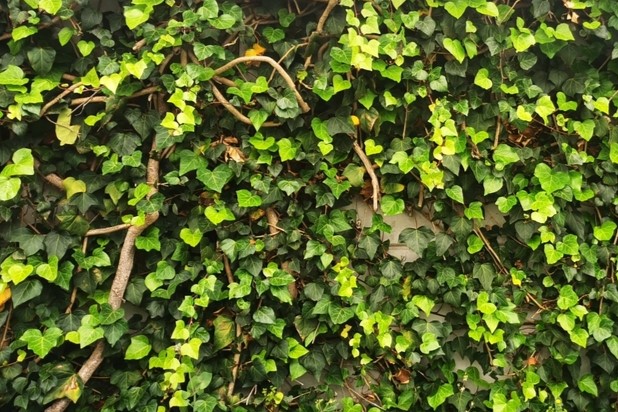
An evergreen perennial climbing or trailing woody plant native to the Canary Islands and possibly parts of North Africa.
NEMBA Category 3 invasive species. This means it may not be grown in protected areas, wetlands, or riparian zones, and should not be allowed to spread further.
A creeper that can climb up to 10m high using aerial rootlets or spread as a dense ground cover. In suitable vertical conditions, it may climb up to 20–30m.
The leaves are bright to dark green, often broad and sometimes edged with silvery-grey or white. They are glossy when young and become leathery with age, usually wider than long, and may be unlobed or shallowly three-lobed. Juvenile leaves may have reddish hairs.
Young stems are green or greenish-brown with a reddish tinge, becoming woody and brown-grey as they mature. The stems are covered with small, red stellate (star-shaped) or scale-like hairs.
Flowers are small, greenish-yellow, and grouped in terminal, globular umbels; they rarely appear in cultivation. Fruits are drupes, black when ripe. Seeds are dispersed by birds that consume the berries.


Hedera canariensis is most notably invasive in South Africa and California (USA), with high potential to invade similar climates elsewhere.
Its aggressive growth, regeneration capacity, and bird-dispersed seeds make it a persistent threat in invaded regions. If planted outside its native range, it requires strict management to prevent ecological disruption.
Birds eat and spread the berries, which is the primary mechanism the seeds are spread from urban spaces to stream banks and wooded areas within the area covered by the birds.
As with all invasive plants, it’s best not to plant them in the first place. If already established, an integrated plan is required to remove them.
Use a combination of physical, chemical, and cultural methods for the most effective control, especially in long-term or large-scale infestations.
The most effective method is to physically remove all visible stems, with monthly screening and removal throughout the growing season.
Repeat treatments and thorough follow-up are needed, as this ivy recovers easily from a single node.
